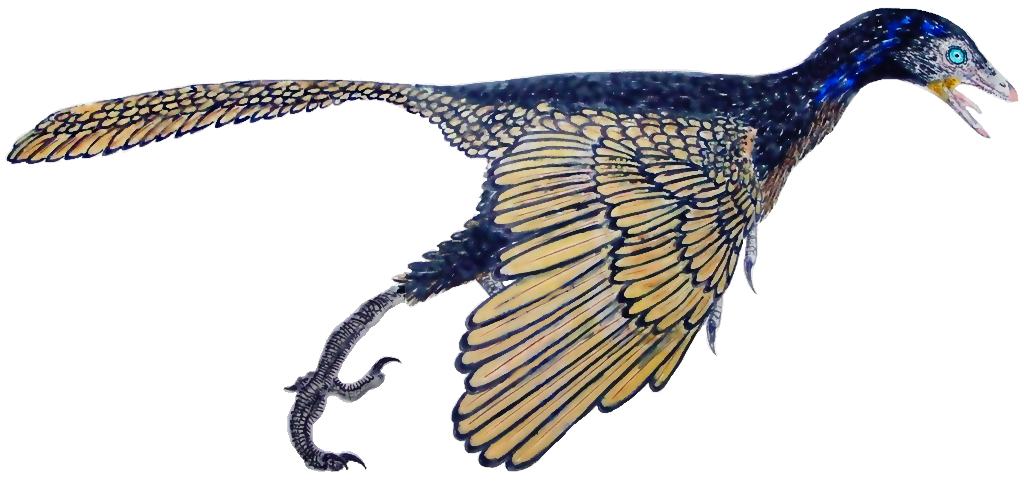The Feathered Dinosaur That Could Fly
Meet Archaeopteryx, one of the most important and fascinating creatures from the Late Jurassic period, around 150 million years ago!

| Meaning | Ancient wing [Archaeo-pteryx] |
| Pronunciation | ar-kee-OP-ter-iks |
| When: | Late Jurassic (about 150 million years ago) |
| Where: | Europe (notably in Germany) |
| What: | Avialan theropod (early bird or transitional form between dinosaurs and birds) |
| Weight: | Approximately 0.5–1 kg (1–2 pounds) |
| Length: | About 0.5 meters (1.6 feet) wingspan |
| Diet: | Carnivorous (ate small reptiles and insects) |
| Discovered: | First described by Hermann von Meyer in 1861 |
Archaeopteryx is often celebrated as the “first bird” because it represents a key link between non-avian dinosaurs and modern birds.
About the size of a modern crow, Archaeopteryx had feathered wings and a tail, which helped it glide and possibly even fly short distances.
It also retained many dinosaur-like features, such as teeth in its beak, clawed fingers, and a long bony tail.
These characteristics make Archaeopteryx a perfect example of how birds evolved from dinosaurs.
Imagine Archaeopteryx flitting through ancient forests, using its feathers to navigate the treetops and evade predators.
The discovery of Archaeopteryx fossils in Germany has provided incredible insights into the evolution of flight and the connection between dinosaurs and birds.
